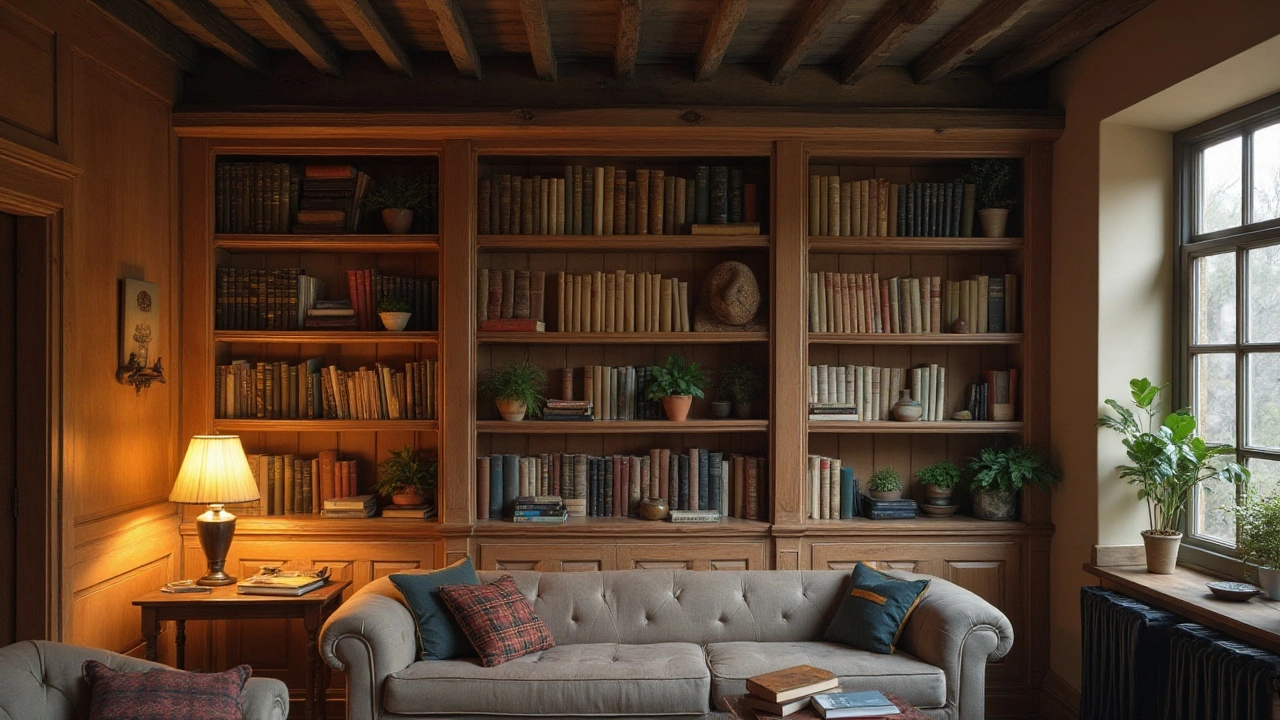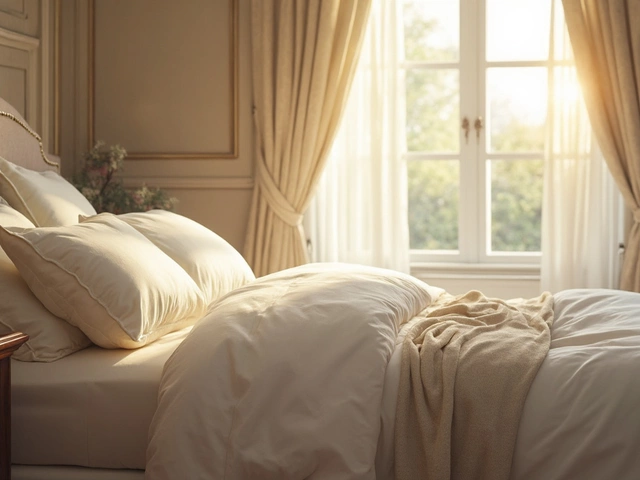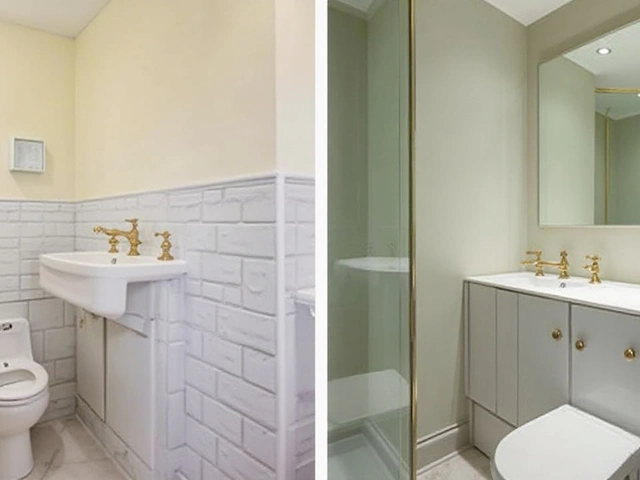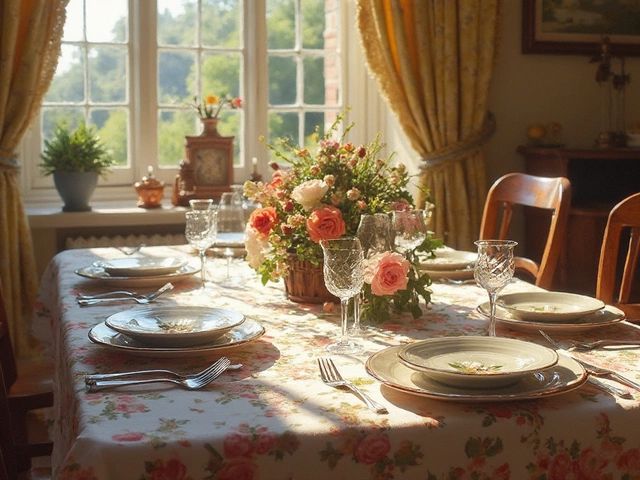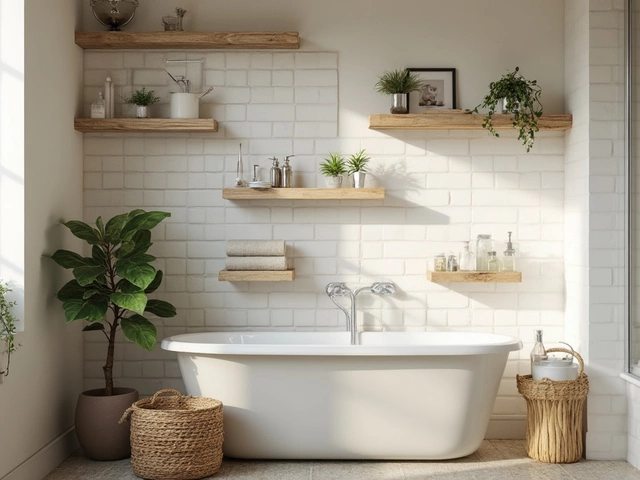When it comes to shelving, selecting the right material can make all the difference between sturdy, reliable storage and a droopy debacle. Sagging shelves aren't just an eyesore; they can become a functional liability. Understanding what contributes to shelving strength starts with knowing your wood options.
Some wood types stand the test of time better than others. Certain characteristics like density, grain pattern, and inherent strength directly affect a shelf's ability to bear loads without bending. Knowing these can save you from sagging horrors.
In this guide, learn about the best woods for shelving, why they work so well, and get tips on installation and maintenance to keep your shelves looking as they should – straight and supportive. Dive into the world of wood and make an informed choice for shelving that lasts.
- Understanding Sag in Shelves
- Why Wood Choice Matters
- Top Woods for Sturdy Shelving
- Tips for Installing and Maintaining
- Creative Uses for Sturdy Shelves
Understanding Sag in Shelves
We've all seen it—a shelf that, once sturdy and proud, now bears a tragic, melancholy droop, buckling under the weight of its duties. At the heart of this sagging problem lies the very material used to construct the shelf. The choices made when selecting the right wood dictate if your shelf will stand the test of time or succumb to gravity's relentless pull. For many homeowners, opting for bargain materials without considering their long-term durability might seem like a money-saver today, but will often lead to costly replacements in the future.
Sagging commonly occurs due to several factors including the wood's strength, the shelf's length and thickness, and the load placed upon it. Simply put, a long, thin shelf made from a weaker material is more prone to bending. Compression and tension on the wood can cause it to fail, resulting in that dreaded dip. Engineers and builders often refer to this as deflection, which measures how much a shelf sags when weight is applied. According to a study by the Forestry Commission, hardwoods like oak or maple have a greater ability to handle these stresses due to their denser grain structure compared to softer woods.
There are design considerations that can help prevent or minimize sagging. For instance, reducing the span of the shelf or increasing its thickness can help in providing more stability. An ideal thickness for many shelves bearing books or heavier items is approximately 3/4 inch, but can vary depending on the type of wood. Employing additional supports can also extend the lifespan of your shelving, ensuring they remain level and strong over time. Still, it's essential to be mindful of what items you place on your shelves, as even the sturdiest woods have limits. Always aim to distribute weight evenly to mitigate undue stress at any particular point.
"The strength of a wood depends not just on its species, but on the specific piece of lumber, as growth rings, grain orientation, and moisture content can significantly impact its performance," said renowned carpenter and woodwork expert, Jane Dawson. This statement underscores the importance of examining the specific wood before making a purchase decision, rather than relying solely on species generalizations.
Such detailed consideration can make all the difference. Understanding this helps not only in managing expectations but also in making informed decisions when planning or purchasing shelving solutions. By investing time to understand the dynamics of sag in shelves, homeowners equip themselves with knowledge that can prevent frustration and structural problems later on. Taking the proactive step of selecting the right wood and design structure will pay off as those straight and steadfast shelves continue to serve both functional and aesthetic purposes.
Why Wood Choice Matters
Choosing the right wood for shelving is more than just an aesthetic decision; it's foundational to the shelf's function and longevity. While it may seem tempting to opt for the cheapest or most readily available wood, doing so can result in shelves that warp, sag, or even break under the strain of everyday use. The density and grain of wood have a direct impact on its ability to support weight. Hardwoods, like oak and maple, are generally denser and more resistant to sag compared to softer woods like pine. This is due to their cellular structure, which provides a tighter and more stable foundation, but we'll delve deeper into those specifics later.
One of the main factors that determine a wood's durability is its density. This refers to how closely packed the fibers are, which affects both the weight and strength of the wood. Denser woods will typically offer greater support, making them the preferred choice for heavy-duty shelving that holds books or kitchen supplies. Another consideration is the wood's grain pattern. Straight grains, commonly found in walnut, ensure even distribution of weight along the shelf's length, which minimizes the risk of sagging.
According to the Wood Database, "the hardwoods may vary widely in weight, but they generally hold up better over time due to their dense structure and inherent strength."
Aside from physical properties, the suitability of wood for shelving also depends on environmental factors. Humidity can cause some woods to expand or contract, compromising the structural integrity of the shelf. In areas prone to moisture, it's better to go with woods that have natural water resistance, such as redwood or cedar, or consider treated options. Paints and finishes also play a significant role in protecting the wood from the elements, extending the lifespan of your shelving.
Let's not forget the element of sustainability while selecting wood. With increasing awareness of environmental concerns, choosing woods sourced from responsibly managed forests can reduce your ecological footprint. Certifications like the Forest Stewardship Council (FSC) label help ensure that the wood you're selecting comes from sustainable sources. Whenever possible, try opting for reclaimed wood; not only is it an eco-friendly choice, but it often comes with a unique character and history that can add charm to your shelves. So, keep your eyes open for those labels next time you're at the lumber yard, weighing options for your next shelving project.
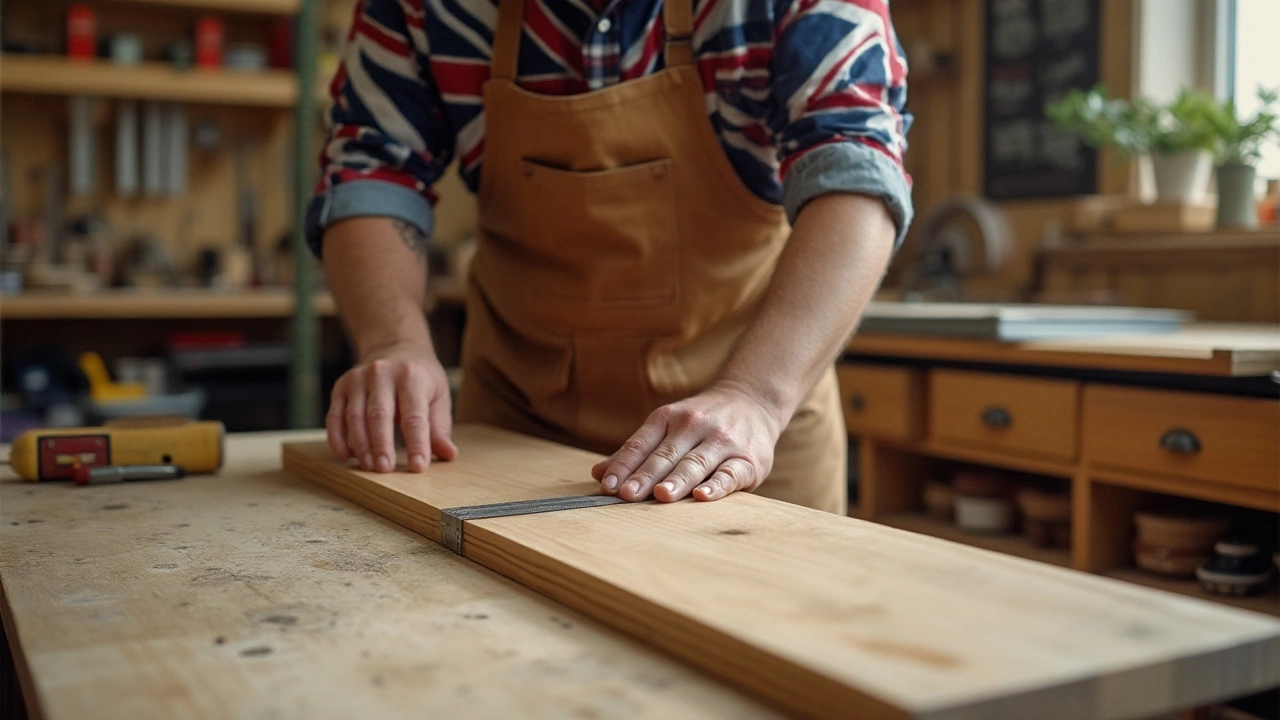
Top Woods for Sturdy Shelving
When it comes to finding the best wood for sturdy shelving, there are a few stand-out types you’ll want to consider. One top contender is oak. Known for its strength and heavy-duty performance, oak delivers exceptional durability. Its dense fibers make it a reliable choice for shelves that need to support a lot of weight. With oak's distinctive grain and gorgeous hue, it also adds a touch of elegance to any room. Unlike some softer woods, oak shelves are less likely to warp or sag over time.
Another excellent option is maple. Maple wood is not just resilient; it can take a beating and still hold firm. It’s one of those woods that blends robustness with a pleasing aesthetic, meaning you won't sacrifice beauty for practicality. Maple has a tight grain and a naturally light color, which can complement various interior styles. Notably, this wood is less prone to absorbing moisture, a key factor in preventing those dreaded saggy shelves. A quote from a well-regarded interior designer suggests,
"Maple’s consistent grain and vibrant finish make it a favorite for those wanting both style and strength."
Cherry wood is another favored choice for those aiming for a balance of strength and stunning visuals. With its warm tones and fine grain, cherry not only creates durable shelves but also warms up the living space aesthetically. While a bit on the pricey side, its ability to resist warping and hold significant weight makes it a worthwhile investment. The natural darkening of cherry wood over time adds character to the living space, making it more appealing to woodworking aficionados.
If budget is a concern, consider pine as an option. Pine, while softer than the other choices, can be quite durable if properly treated and supported. Using thicker panels and reinforcing with proper shelving brackets can mitigate any potential sags. Pine's affordability coupled with its light weight makes it a popular choice for DIY projects. Its natural finish can be easily enhanced with stains or paint, offering versatility in design.
To compare these woods, let's look at a straightforward overview:
| Wood Type | Durability | Visual Appeal | Cost |
|---|---|---|---|
| Oak | High | High | Medium to High |
| Maple | Very High | Medium to High | Medium |
| Cherry | High | Very High | High |
| Pine | Medium | Variable | Low to Medium |
The choice of wood will ultimately depend on your shelving needs and personal taste. Knowing the pros and cons of each option can help tailor your decision to the specific demands of your home or office environment. Choose wisely, and you'll enjoy shelves that not only look beautiful but also stand the test of time and use.
Tips for Installing and Maintaining
Installing shelves in a home or office space demands attention to detail and mindful planning to ensure they serve both style and function effectively. The first step is to decide on the purpose of your shelves – whether they're for storing heavy-duty items or merely for display. This determines not just the wood type but also where and how they should be installed. For multi-use scenarios, make sure the wall space is adequate and accessible. It would be wise to invest in quality anchors and brackets to enhance stability, minimizing any risk of sagging over time. Choosing stainless steel or brass materials for mounting won't just be a practical choice but also an aesthetic one. These materials reliably maintain integrity over the years.
Maintaining a perfectly level shelf is crucial, as even a slight tilt can lead to undesirable sagging over time. Therefore, use a level during installation to ensure everything is aligned as it should be. Have a friend assist you to hold the level while you align the piece; two pairs of hands and eyes often achieve a balanced outcome more efficiently than one. Also, keep in mind the weight distribution when loading your shelves. It's often suggested that heavier items go on the lower levels, flowing upwards in a crescendo to lighter items. This ensures a robust and steady base for sturdy shelving.
When it comes to regular maintenance, checking for any loosening of bolts or screws periodically is essential. This can prevent major issues down the line. Give the shelves a once-over monthly, ensuring that fastenings keep their grip. If you're dealing with durable wood, a light dusting will usually suffice for cleaning. Avoid using water directly on wooden surfaces as, especially over time, it can lead to warping. Instead, consider using a dry cloth or a feather duster, preferably one with an extendable arm for hard-to-reach spots. Never overlook the style factor; enhancing your shelves with some chic liners or adding a splash of color can breathe new life into them.
For specific shelving structures, utilizing tools like a stud finder is invaluable. It increases the shelf's carrying capacity significantly by anchoring directly into the wall studs. According to a recent report by 'House Beautiful,' properly mounted shelves can hold up to 50% more weight than those merely attached to drywall.
"Proper installation is half the battle," says Karen Elliott, an expert on home enhancement, "doubling down on installation guarantees you maximize the shelf's practical potential."Following these tips will not only keep your shelves from sagging but also extend their lifetime significantly. Whether you're installing new pieces or revamping existing ones, keep these strategies in mind for the best results.
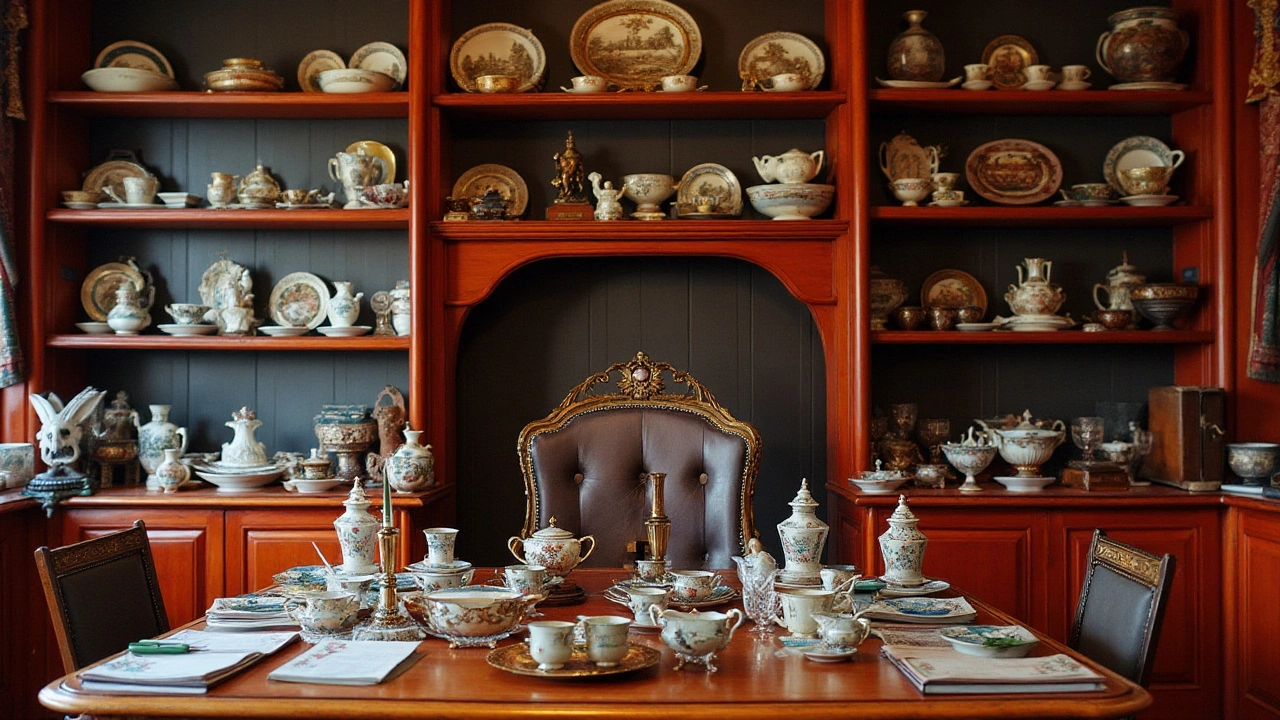
Creative Uses for Sturdy Shelves
Sturdy shelves do more than just hold our books and potted plants; they offer endless possibilities for creativity and expression within our homes. Making the most of sturdy wood shelving can add functionality and style to any room. When considering what these reliable shelves can offer, think beyond traditional storage. Imagine transforming a bare wall into a charming gallery or an elegant focal point that reflects your personality and passions. Creating display areas with these dependable surfaces is an effortless way to inject art and conversation into your living spaces.
Sturdy shelves can be the unsung hero in orchestrating a harmonious balance between function and design. Picture an array of beloved kitchenware neatly arranged, making everyday meal prep both efficient and aesthetically pleasing. In a children's room, strong shelves become a canvas for colorful toys, not only organizing but also igniting imagination and play. It's these little details, executed with thoughtful planning, that turn a house into a home filled with character and warmth.
The use of shelving materials that will hold weight without yielding opens doors to innovative decor solutions. Consider using shelves as a backdrop for lush greenery, bringing the vibrance of the outdoors in. The natural textures of the wood complement the serenity of nature-inspired interiors. Whether accommodating an indoor garden or displaying a curated collection of artwork, these durable additions provide a central stage where items can shine safely. They become partners in design, offering support both literal and esthetic.
Creating Unique Spaces
Instead of traditional uses, shelves can be part of unique custom installations. In narrow spaces or oddly shaped nooks, employing these strong supports can maximize potential, turning forgotten corners into charming reading alcoves or luxurious dressing areas. When these sturdy shelves are used cleverly, they can visually enlarge a space, defying the limits imposed by square footage.
"Incorporating shelving into awkward spaces can drastically enhance both utility and creativity," says renowned interior designer Jane Doe. "It allows homeowners to claim every inch for beauty and function, without compromising on safety or aesthetics."
Through the inventive use of durable wood, you can design offices where vital documents co-exist effortlessly with personal mementos, creating a workspace that feels productive but still personal. If you’re an artist or crafts enthusiast, utilize shelf space to organize supplies systematically while keeping them accessible for spur-of-the-moment inspiration. This blend of practicality and creativity harnesses the full potential of your surroundings, turning mere walls into an expression of who you are.

